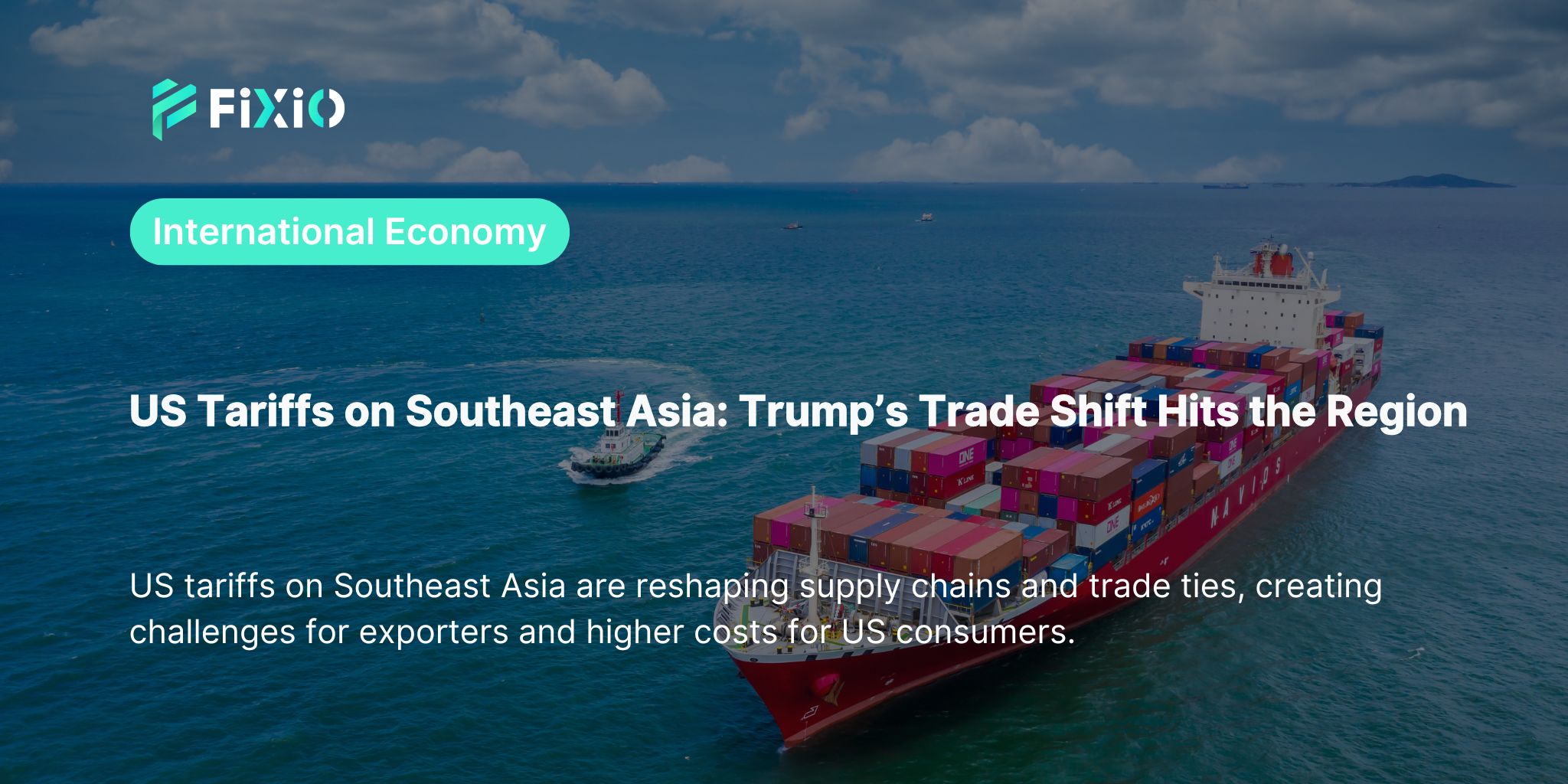
US tariffs on Southeast Asia are creating fresh trade challenges for some of the fastest-growing export economies. For years, these nations benefited from supply chain diversification away from China. Now, many face steep tariffs under President Donald Trump’s second term. The shift is reshaping trade flows, disrupting manufacturing hubs, and adding costs for exporters and American consumers.
Over the past decade, rising tariffs on Chinese goods pushed many companies to move production to lower-cost countries like Vietnam, Cambodia, Bangladesh, and Indonesia. These nations offered young workers, better infrastructure, and competitive wages. As a result, they became export-driven economies. Trump’s broader protectionist policies now extend beyond China. New tariffs of 19–20% on key Southeast Asian hubs create uncertainty for businesses. Many had relocated to avoid Washington-Beijing disputes. Those moves may no longer deliver the expected benefits.
The US also introduced a 40% tariff on transshipments. This term once meant goods routed through a third country with minimal processing. Trump’s new definition is broader. It can include any shipment with significant Chinese content, even if processed elsewhere in Asia. This policy adds bureaucracy, higher compliance costs, and delays. Goods may face lengthy customs checks. In garments, footwear, and electronics, these costs can erase the region’s pricing advantage.
Governments presented their final rates as diplomatic wins. Cambodia’s 19% was called “good news” for its economy. Malaysia and Bangladesh celebrated similar results. Experts, however, warn these rates are still high by historical standards. Exporters may struggle to stay competitive. Deborah Elms of the Hinrich Foundation said the tariff formula punished poorer nations with large export volumes to the US but low imports from it. She called the outcome “really lose-lose” for both American consumers and export-reliant Asian economies.
Oxford Economics believes US tariffs on Southeast Asia will reshape supply chains. Some firms may relocate to other markets or nearshore production closer to the US. Others might move some operations back to China, using its economies of scale despite higher tariffs. Goods that rely heavily on US buyers—like household appliances—may shift to nations with trade deals or lower tariffs. Chinese companies might expand in Southeast Asia to label goods as “Made in” those countries, avoiding transshipment penalties.
Some predict the tariffs will slow or reverse the move away from China. Others argue that rising Chinese labor costs will keep investment flowing into Southeast Asia. Even with tariffs, many countries still face lower rates than China, preserving some advantage. The unclear definition of transshipment remains a major concern. Without clarity, companies may hesitate to invest further in the region.
The US’s push for protectionism is testing Southeast Asia’s export economies. Equal tariff rates across key hubs may prevent one country from suffering more than others. Yet, without smart policy and adaptation, the region’s role as a manufacturing alternative to China could fade. This shift may ripple through global trade and consumer prices. Stay informed with the latest Forex trading news and analysis. Visit our website now at: https://fixiomarkets.com/en/prex-blogs
US tariffs on Southeast Asia are reshaping supply chains and trade ties, creating challenges for exporters and higher costs for US consumers.
Superior trade execution & trading conditions with the NDD method.

The online FX industry provides a platform for investors worldwide to engage in the buying and selling.

Subscribe to our daily newsletter and get the best forex trading information and markets status updates
Trade within minutes!
Comment (0)